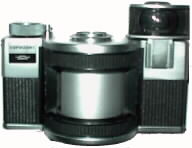|
Confidential
background
information
on Taiwan, for
the press
For
me, Taiwan was considerably different than I had expected. It has to
be one of the more diverse places, that I have visited. It is
surprising that relatively few tourists travel to Taiwan. From my
observations, Taiwan is a technologically advanced, very beautiful,
tropical island that offers an enormous amount of diversity and
things to do and see. The crime rate is very low, the food is
excellent, prices are low and the people are well educated, are
extremely friendly, and unlike some countries, Americans are welcome.
The night life in Taipei is active, 7 days a week. Taipei shopping is
unsurpassed with American style department stores, which are open to
9PM or 10PM and at least 5 so-called night markets, which seem to be
open throughout the night, though I was told that most night market
stores close by 2:00AM. Surprisingly, I would say that there is a
greater variety of products available to purchase in Taiwan, than in
America. This is particularly the case in terms of electronics,
clothing and food. Prices seem to be about 20% lower than in the
United States. This applies also to brand name items such as
cosmetics and clothing. Taiwan also offers a number of excellent
museums which would rival the top museums in Europe and the United
States including the famous National Museum, the Museum of
pre-history, the Aboriginal museum and many others. The bulk of the
population lives on the northern tip of Taiwan, near Taipei, while
the center part of the island has volcanic mountains rising to up to
4000 meters (12000 feet), which I was told sometimes have snow
covered peaks. I particularly enjoyed the south eastern portion of
the island, in the area around Taitung and Huallien. Here you will
find spectacular natural beauty including naturally cut sandstone
sculptures, high, rocky volcanic peaks, temples nestled on mountain
sides, monkeys, mountain waterfalls and exotic tropical plants and
fruits. The spectacular Taroko Gorge is world famous. This area is
also home to as a large aboriginal population. There are 11 different
aboriginal cultures with distinct languages. In the past, the
aborigines built suspension bridges with spans of up to 120 meters
(400 feet) long. They also apparently mastered the manufacturing of
steel. Some tribes dressed in beautiful knitted outfits similar to
those found in Eastern Europe, while in other tribes, the natives
only wore loin cloths. Up to the early part of the 20th century, some
of the tribes were head-hunters ... yet with a certain degree of
technological knowledge. The aborigines are also globally known for
their advanced musical ability, in particular, their 3 part
harmonies. The the song for the Atlanta Georgia Olympics was written
and sung by members of the aboriginal tribe known as the Ami's. I
personally heard music sung by the Bonan tribe and I can say that it
is most inspiring. It is well worth to visit Taiwan.
The word "Taiwan"
was initially the name of the trading town started by the Dutch, on
the southern tip of the island, back in the early 1600's, though some
people say that the name is a comes from an early aboriginal word.
The word Formosa, to which the island is also known as, is a
Portuguese word for "Island Beautiful" which sailors are
said to have exclaimed, when they first say Taiwan. In his excellent
book entitled "Japanese Rule in Formosa", published in
1907, Yosaburo Takekoshi, who was a member of the Japanese Diet
(Senate), said that it is also possible that the name Taiwan was a
derivative of two Chinese words. Baron Shimpei Goto, who was the
Chief Civil Administrator of Taiwan, under the Japanese, wrote in
1905 that the aborigines referred to Taiwan as "Pa-Kan" or
"Pakande", and further wrote that the first wave of Chinese
immigrants from the 17th century referred to the island as
"Loocho". - Frank X.
Didik, August, 2004
|




















